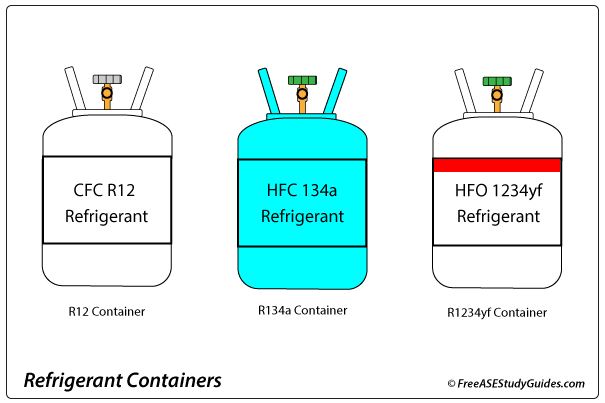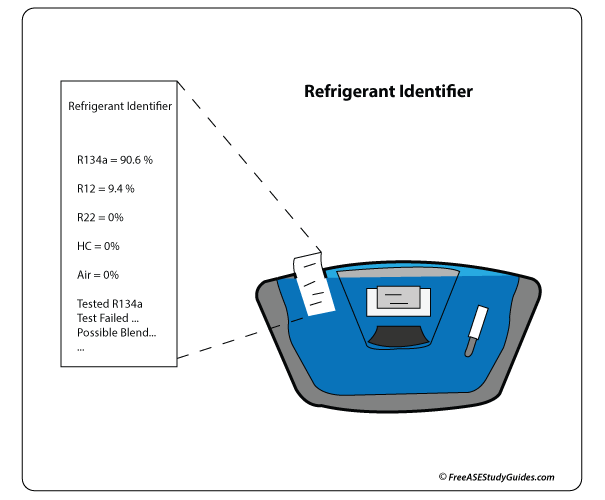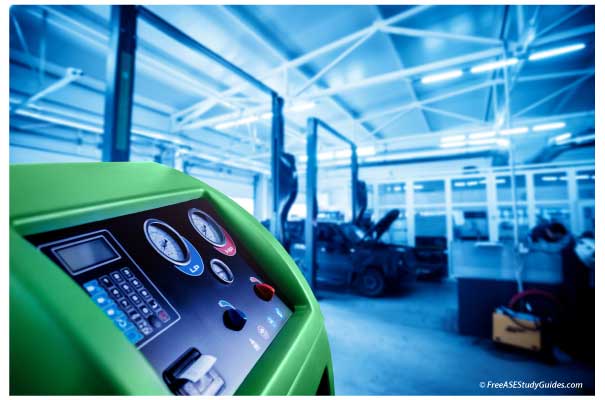Refrigerant Identifiers

Refrigerants should never be intentionally mixed. HFO 1234yf refrigerant has replaced R134a and R12 refrigerant. 1234yf refrigerant comes in a white container with a red stripe and requires a 1234yf recovery recycle and recharge machine.
These refrigerants should not be mixed because they are different compounds with different characteristics. The metering system and other components are designed for each refrigerant. The system may perform poorly, and the compressor and other system components may fail prematurely.

Use a refrigerant identifier or gas analyzer when a refrigerant mixture is suspected. These devices typically detect R12, R134a, 1234yf, air, and hydrocarbons. Hydrocarbon gases like butane and isobutane often set an audible alarm because they can be explosive and hazardous to the technician or occupants of the vehicle. It displays the amount of each refrigerant as a percentage of the total blend. It also displays the amount of air in the system.

The average shop recycling machine cannot separate R12, R134a, and 1234yf. Special procedures and equipment handle and separate this mixture of refrigerants. Refrigerants are color-coded, and R-134a's predecessor, CFC-12 or R-12, is contained in a white container. Refrigerant 1234yf containers are white with a red stripe.